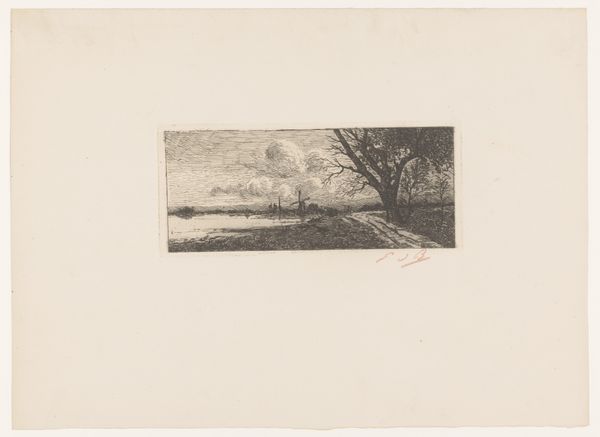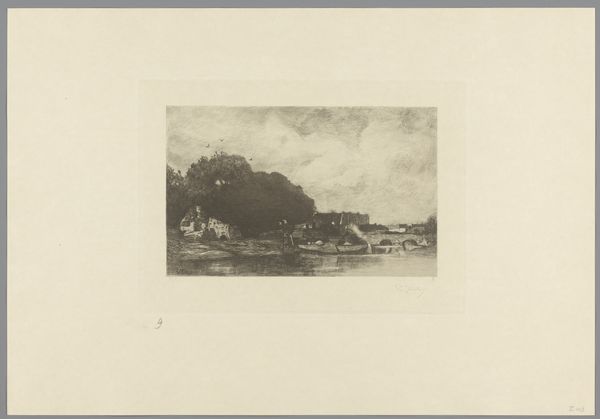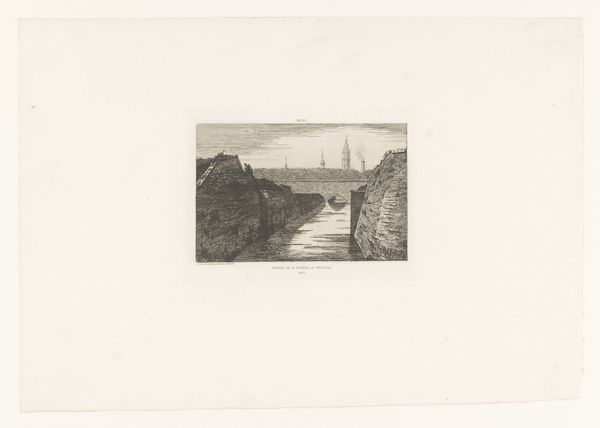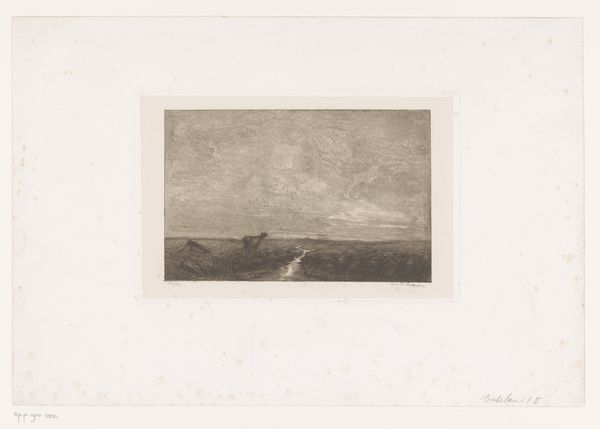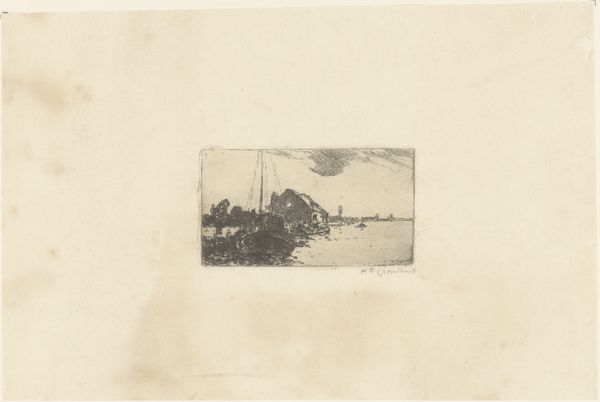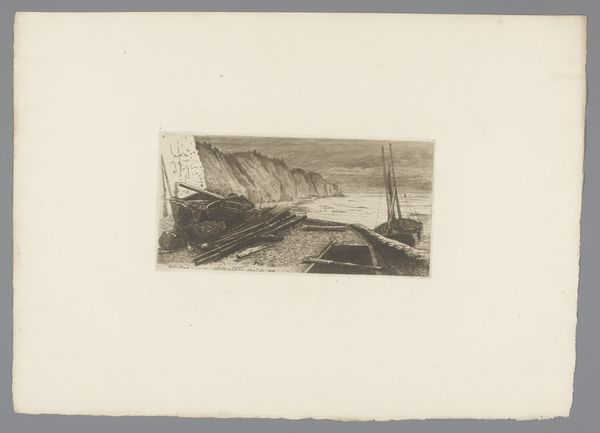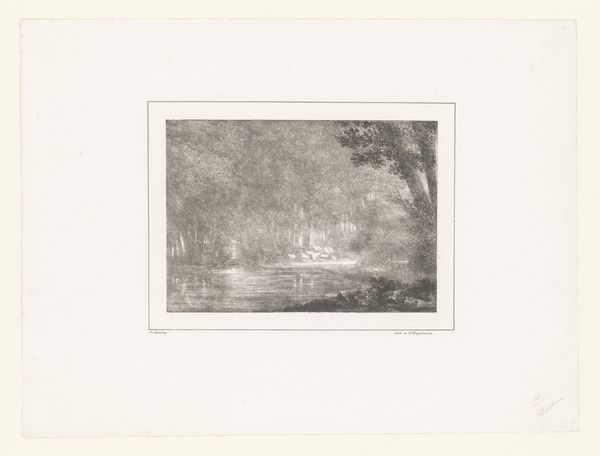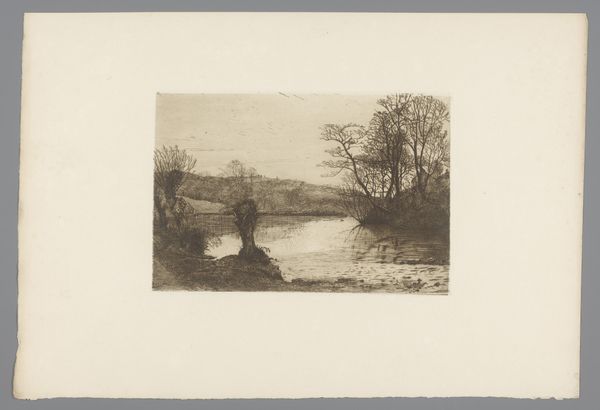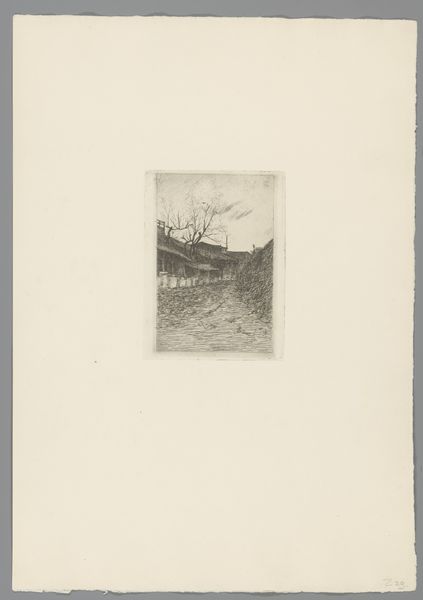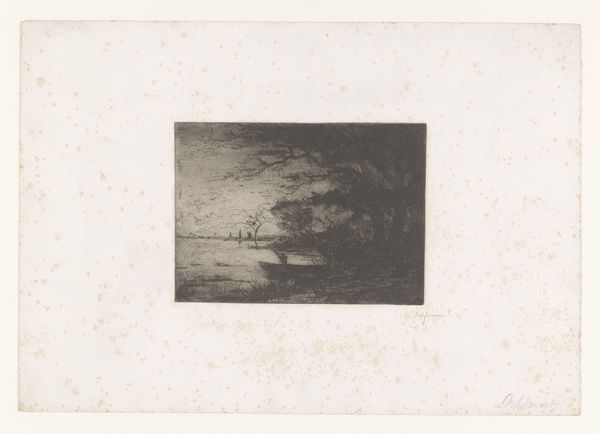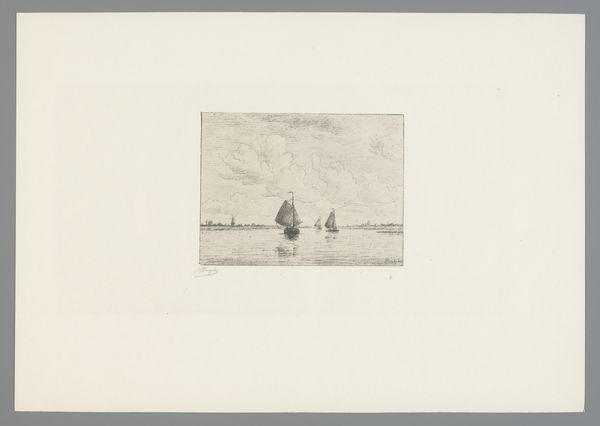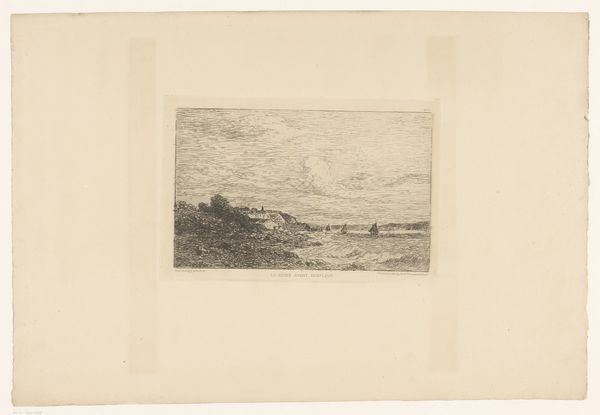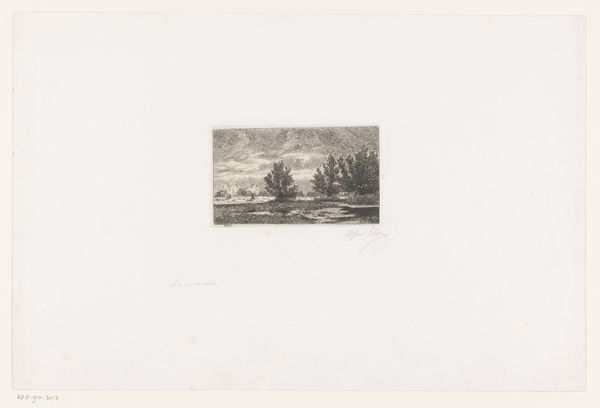
drawing, print, etching
#
drawing
# print
#
impressionism
#
etching
#
landscape
#
cityscape
#
realism
Dimensions: height 199 mm, width 278 mm
Copyright: Rijks Museum: Open Domain
Curator: We’re looking at Adolphe Appian’s “Gezicht op omgeving van Lyon,” which translates to “View of the Surroundings of Lyon,” created around 1880. It's an etching, a type of printmaking that allows for very fine lines and detailed textures. Editor: It feels moody. All grays and muted light, heavy sky. The texture almost vibrates—I can feel the dampness coming off that river. It definitely evokes the burgeoning industrial age, what with the steamship puffing away. Curator: Appian captured a period of dramatic urban and industrial transformation. Lyon was rapidly growing, its traditional industries shifting toward manufacturing. Prints like this offered a way for a broader public to engage with those changes, depicting the recognizable world but subtly framing its new face. Editor: Absolutely, this piece offers a glimpse into the socio-economic context of Lyon. I'm thinking about access—prints like these, multiple originals, allowed a wider viewership to experience a mediated view of the city's shifting identity. It democratizes art, at least somewhat. Curator: It is a testament to the artist’s engagement with contemporary social forces. Appian wasn’t just painting pretty pictures; he was depicting how life was changing and reflecting the anxiety as well as excitement of this transformation. Editor: Yes, this image is charged with social meaning; its value doesn’t simply come from aesthetic beauty. The choice to focus on industry, or a newly industrializing cityscape, becomes significant in its own right. Art and visual culture help us grapple with the changing social landscape, the tensions between modernity and tradition. Curator: And remember the art world context here. He wasn’t just working in isolation, but responding to currents like Realism and Impressionism and incorporating these tendencies to his own socio-political interpretation of the landscape. Editor: Seeing it now I better appreciate its visual storytelling and how that weaves into social narrative of progress, work and life at the end of the 19th century. Curator: This piece invites us to ponder the role of the artist during times of great change. It helps us think about representation, and the very active role that artwork can play in constructing societal thought and attitude.
Comments
No comments
Be the first to comment and join the conversation on the ultimate creative platform.
